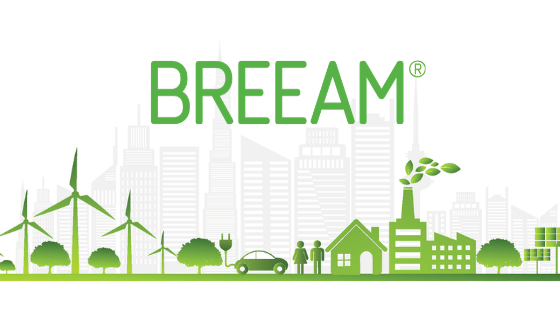The importance of sustainability in construction is rising in the present day. Structures need to be planned with a low carbon footprint and high-efficiency standards in mind. To do this, a lot of initiatives make use of the Building Research Establishment Environmental Assessment Methodology (BREEAM) checklist. The widely-used BREEAM HEA 06 assessments UK technique assesses a building’s performance in nine areas: land use, administration, energy, transportation, waste production during construction, commodities used in construction, and well-being and wellness. In this article, we’ll look at how to make your own thorough BREEAM assessment to make sure that your construction endeavour satisfies all sustainability certification requirements.
A Brief Synopsis Of BREEAM
A well-known and esteemed worldwide sustainability evaluation technique for structures and infrastructure projects is BREEAM (Building Research Establishment Environmental Evaluation Method). BREEAM, a system for evaluating and assessing the environmental, social, and financial health of buildings of all types, was created in 1990 by the Building Research Establishment (BRE) in the United Kingdom. A building’s lifecycle is covered by BREEAM in several ways, including planning, building, operation, and upkeep. Energy efficiency, water consumption, handling of waste materials, pollution, environment, health and well-being, transportation, and creativity are some of the criteria it uses to assess a project.
There are particular requirements and performance metrics for every category. On a scale, projects which go through the BREEAM HEA 06 assessments are rated from Pass to Outstanding. Developers, building owners, and tenants can use this rating to show their dedication to sustainable practices, enhance the buildings’ total environmental sustainability, and set themselves apart from competitors. A thorough instrument for assessing and enhancing a building’s sustainability, encouraging eco-friendly operations, and bringing about good change in the construction and real estate sectors is BREEAM.
A BREEAM Checklist: What Is It?
Project teams, assessors, and various other stakeholders utilise BREEAM checklists as an instrument to monitor and assess a building or infrastructure project’s sustainability achievement relative to the assessment criteria. During the design, building, and operation phases, the project team is guide by the checklist, which aids in identifying and putting into practice sustainable practices that meet BREEAM requirements. Particular requirements and performance metrics are mention under every category, along with the corresponding points or credits which may earn.
The checklist can be use the project team to track growth, prioritise and target enhancements. And make sure all required paperwork is to facilitate the BREEAM evaluation procedure. Project teams should methodically handle the social, economic, and environmental aspects of their work by adhering to the BREEAM checklist. This will help them obtain an improved BREEAM grade and show their dedication to environmentally friendly development.
Typical Errors To Steer Clear Of In BREEAM Assessment
You must incorporate a BREEAM checklist into your internal inspections to use it. Nevertheless, errors are still possible even when using this tool. The following are some typical evaluation mistakes to watch out for:
Failure To Present Enough Proof
Not providing sufficient paperwork and proof to support the environmental practises employ in the project is a common error made during BREEAM evaluations. Keep thorough records that show adherence to the BREEAM requirements. Such as calculations, design plans, requirements, and pictures, to prevent this.
Overemphasising In One Area
While it’s critical to perform well in certain areas, like water management or conservation of energy. It’s also important to pay attention to other areas of the evaluation. Since BREEAM approaches sustainability holistically, optimising your score involves considering all pertinent categories and factors. Distribute your resources and efforts evenly throughout all functional areas.
Ignoring The Long-Term Costs And Benefits
Certain project teams might give precedence to immediate cost reductions above sustained environmental and financial gains. Meanwhile, this strategy may result in lost chances to improve BREEAM ratings and reap the long-term benefits of sustainable practices. Examine the advantages and lifetime expenses associated with various options before investing in solutions which will be beneficial to the environment and its inhabitants in the long run.
Too Late To Begin The BREEAM Process
Sustainability measures have been more successfully include in the planning and building stages. When the BREEAM evaluation process is start early in the project’s life cycle. Postponing the procedure could lead to lost chances to obtain higher ratings and credits. From the outset of the project, involve a BREEAM assessor to help the team make informed choices.
Inefficient Cooperation And Communication
Close cooperation among project stakeholders, such as architects, engineers, contractors, and managers of facilities, is necessary for successful BREEAM assessments. To encourage information sharing and decision-making, make certain that everyone is aware of the BREEAM objectives, regulations, and duties. You should also establish clear channels of communication.
Final Words
Project teams might enhance their likelihood of obtaining a higher BREEAM grade. And prove their dedication to environmentally friendly development by preventing these typical blunders.
Also Read: The Role of Technology in Modern Security Assessments


